
Taharqa, also spelled Taharka or Taharqo, was a pharaoh of the Twenty-fifth Dynasty of Egypt and qore (king) of the Kingdom of Kush from 690 to 664 BC. He was one of the "Black Pharaohs" who ruled over Egypt for nearly a century.
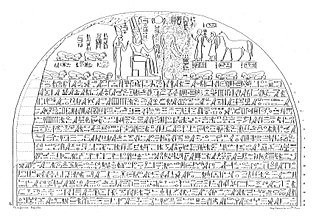
Piye was an ancient Kushite king and founder of the Twenty-fifth Dynasty of Egypt, who ruled Egypt from 744–714 BC. He ruled from the city of Napata, located deep in Nubia, modern-day Sudan.

Aspelta was a ruler of the kingdom of Kush. More is known about him and his reign than most of the rulers of Kush. He left several stelae carved with accounts of his reign.

Jebel Barkal or Gebel Barkal is a mesa or large rock outcrop located 400 km north of Khartoum, next to Karima in Northern State in Sudan, on the Nile River, in the region that is sometimes called Nubia. The jebel is 104 m tall, has a flat top, and came to have religious significance for both ancient Kush and ancient Egyptian occupiers. In 2003, the mountain, together with the extensive archaeological site at its base, were named as the center of a World Heritage Site by UNESCO. The Jebel Barkal area houses the Jebel Barkal Museum.
Napata was a city of ancient Kush at the fourth cataract of the Nile founded by the Egyptian Amun cult for Egyptian pilgrims given by its, as suggested, Egyptian name. It is located approximately 1.5 kilometers from the east side of the river at the site of modern Karima, Sudan. It was the southernmost permanent settlement in the New Kingdom of Egypt and home to Jebel Barkal, the main Kushite cult centre of Amun. It was the sometime capital of the Twenty-fifth Dynasty of Egypt and, after its fall in 663 BC, of the Kingdom of Kush. In 593 BC, it was sacked by the Egyptians and the Kushite capital was relocated to Meroë. Even after this move, Napata continued to be the kingdom's primary religious centre. The city was sacked a second time by the Romans in 23 BC but was rebuilt and continued as an important centre of the Amun cult.
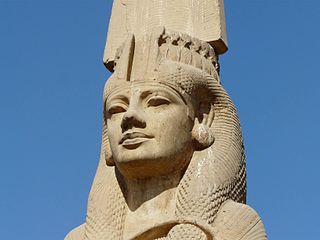
Meritamen was a daughter and later Great Royal Wife of Pharaoh Ramesses the Great.

Nastasen was a king of Kush who ruled the Kingdom of Kush from 335 to 315/310 BCE. According to a stela from Dongola, his mother was named Queen Pelkha and his father may have been King Harsiotef. His successor was Aryamani.

Kandake, kadake or kentake, often Latinised as Candace, was the Meroitic term for the sister of the king of Kush who, due to the matrilineal succession, would bear the next heir, making her a queen mother. She had her own court, probably acted as a landholder and held a prominent secular role as regent. Contemporary Greek and Roman sources treated it, incorrectly, as a name. The name Candace is derived from the way the word is used in the New Testament.

Anlamani was a king of the Kingdom of Kush in Nubia, who ruled from 620 BC and died around 600 BC.

Nuri is a place in modern Sudan on the west side of the Nile, near the Fourth Cataract. Nuri is situated about 15 km north of Sanam, and 10 km from Jebel Barkal.

Aryamani was a Nubian king.

The Kingdom of Kush, also known as the Kushite Empire, or simply Kush, was an ancient kingdom in Nubia, centered along the Nile Valley in what is now northern Sudan and southern Egypt.
Tabiry was a Nubian queen dated to the Twenty-fifth Dynasty of Egypt.
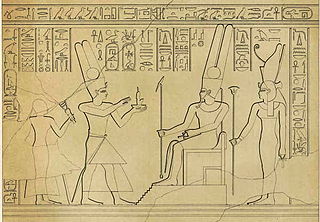
Abar was a Nubian queen of the Kingdom of Kush dated to the Twenty-fifth Dynasty of Egypt. She is known from a series of stela found in Sudan and Egypt. Her appearances mark her as the niece of King Alara of Nubia, married to King Piye and the mother of King Taharqa.
Peksater (Pekerslo) was a Nubian queen dated to the Twenty-fifth Dynasty of Egypt.

The Eighteenth Dynasty of Egypt is classified as the first dynasty of the New Kingdom of Egypt, the era in which ancient Egypt achieved the peak of its power. The Eighteenth Dynasty spanned the period from 1550/1549 to 1292 BC. This dynasty is also known as the Thutmosid Dynasty for the four pharaohs named Thutmose.
Nubemhat was an ancient Egyptian queen of the Second Intermediate Period. She was the wife of king Sekhemre Wadjkhaw Sobekemsaf I. She had the title Great Royal Wife and is known from several monuments. A statue with her name and title was found at Kawa in Nubia. She also appears on a stela from Denderah where her daughter, the king's daughter Sobekemheb is mentioned. There also appears the king's son Ameny, son of the queen Haankhes.
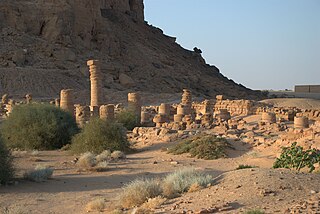
The Temple of Amun is an archaeological site at Jebel Barkal in Northern State, Sudan. It is situated about 400 kilometres (250 mi) north of Khartoum near Karima. The temple stands near a large bend of the Nile River, in the region that was called Nubia in ancient times. The Temple of Amun, one of the largest temples at Jebel Barkal, is considered sacred to the local population. Not only was the Amun temple a main centre of what at one time was considered to be an almost universal religion, but, along with the other archaeological sites at Jebel Barkal, it was representative of the revival of Egyptian religious values. Up to the middle of the 19th century, the temple was subjected to vandalism, destruction, and indiscriminate plundering, before it came under state protection.
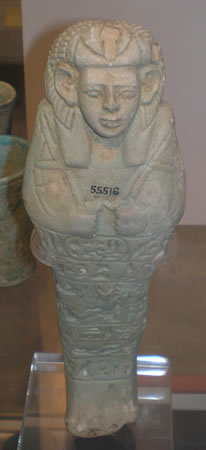
Nasalsa was a Nubian queen of the Kingdom of Kush. She is known from a shabti, some inscriptions on tablets and cups, text on the stela of Khaliut, a dedication inscription and a text from Kawa. Dodson mentions that Nasalsa is named on the Enthronement Stela of Atlanersa and on the Election and Adoption Stelae of Aspelta. These stelae were from Gebel Barkal.














